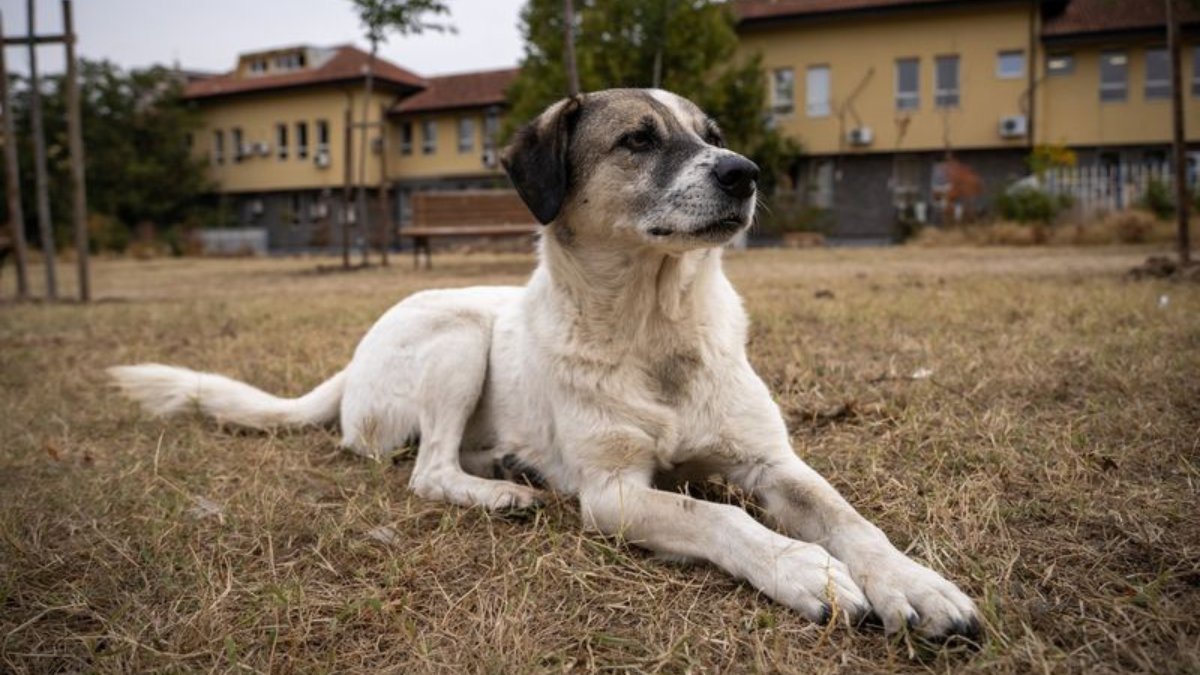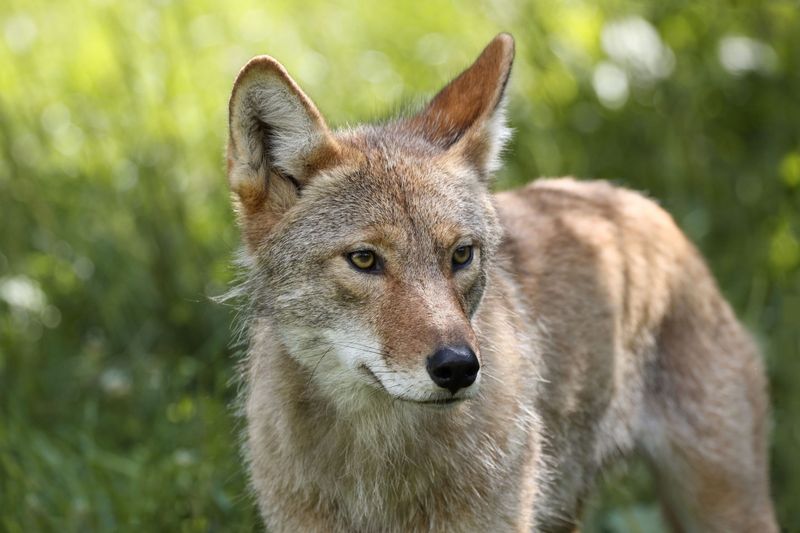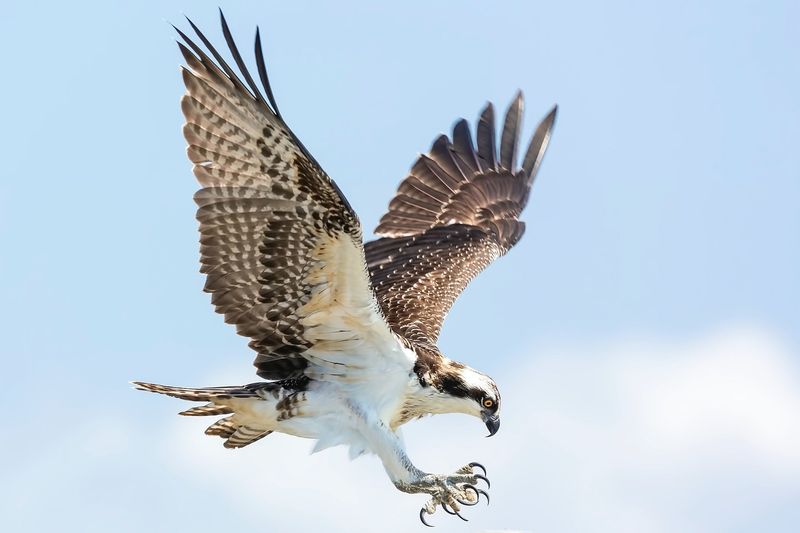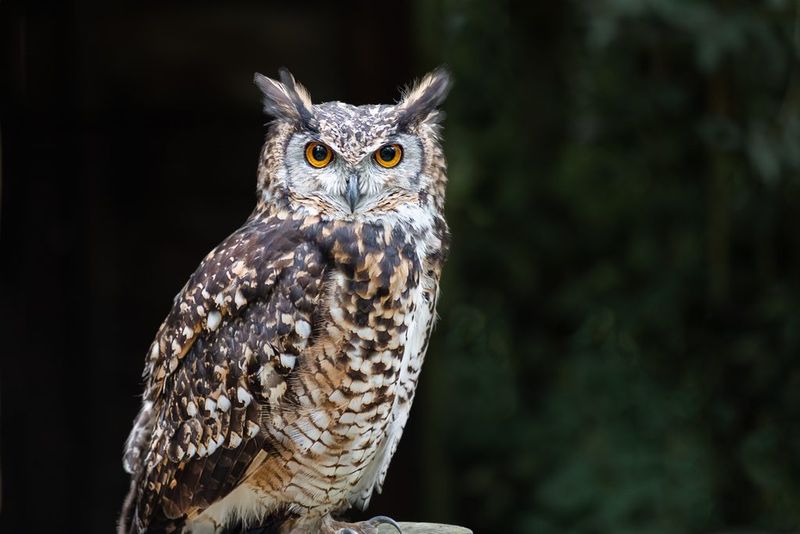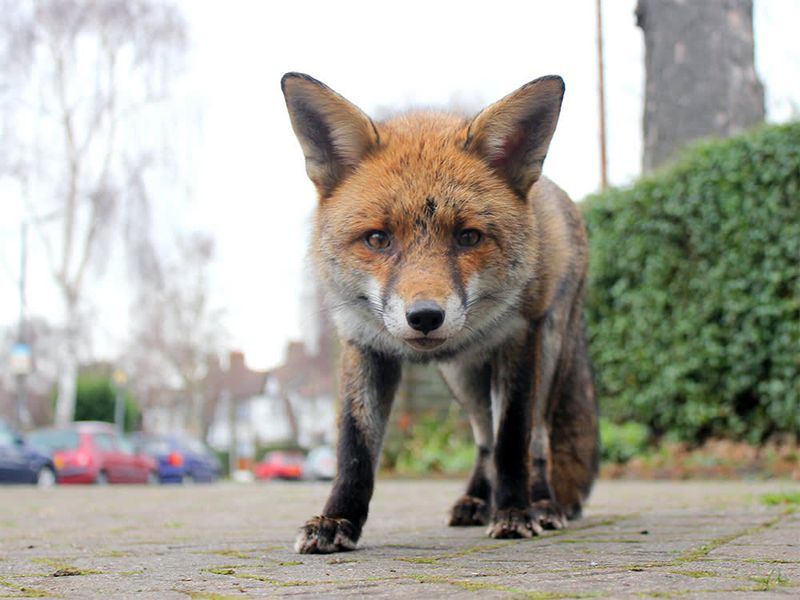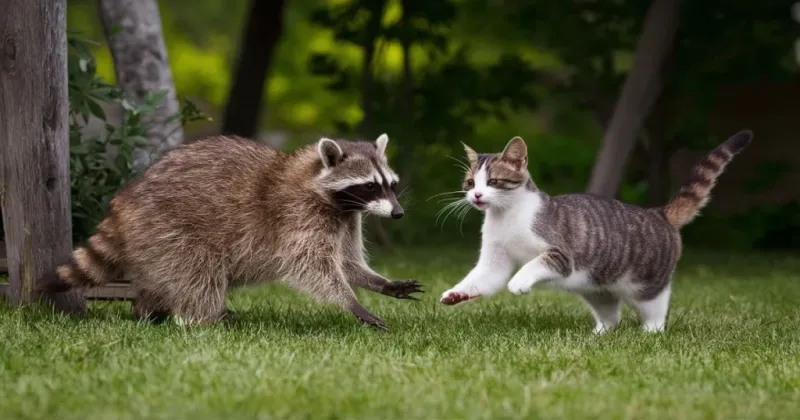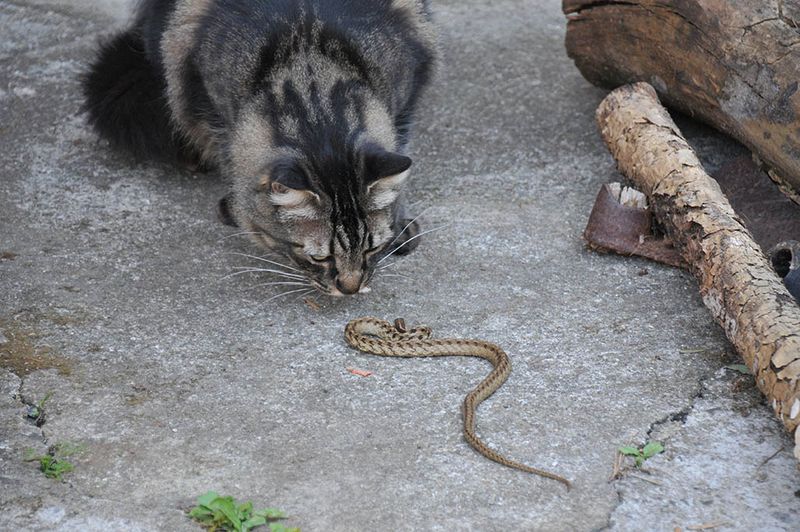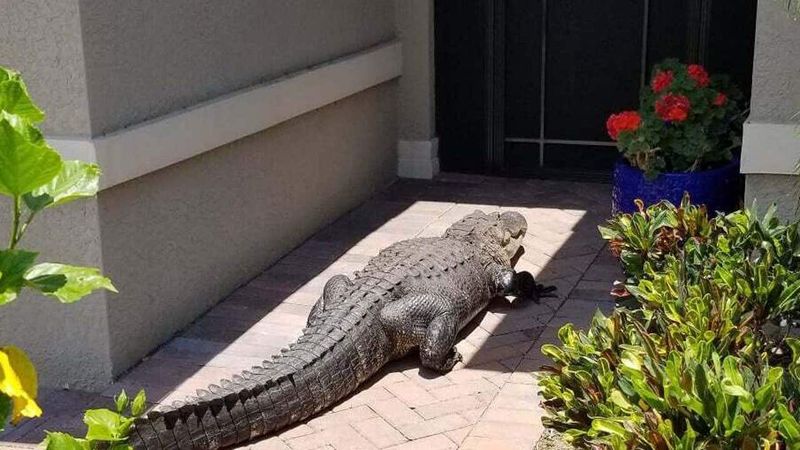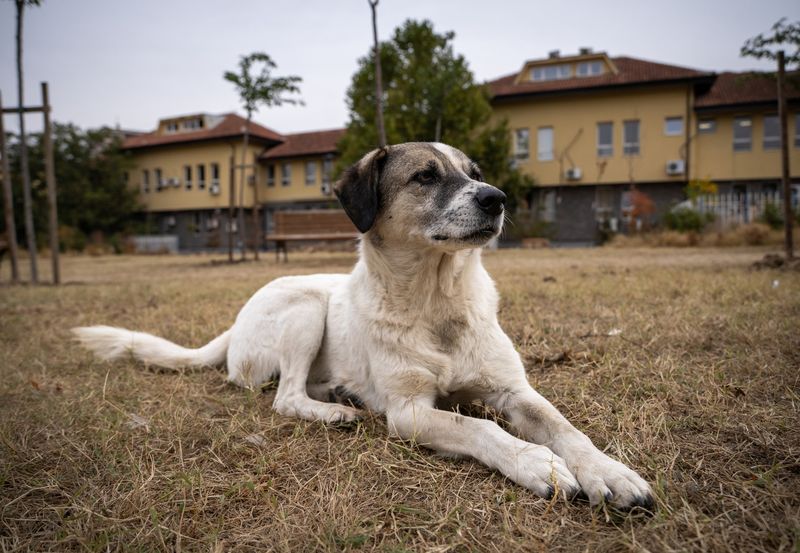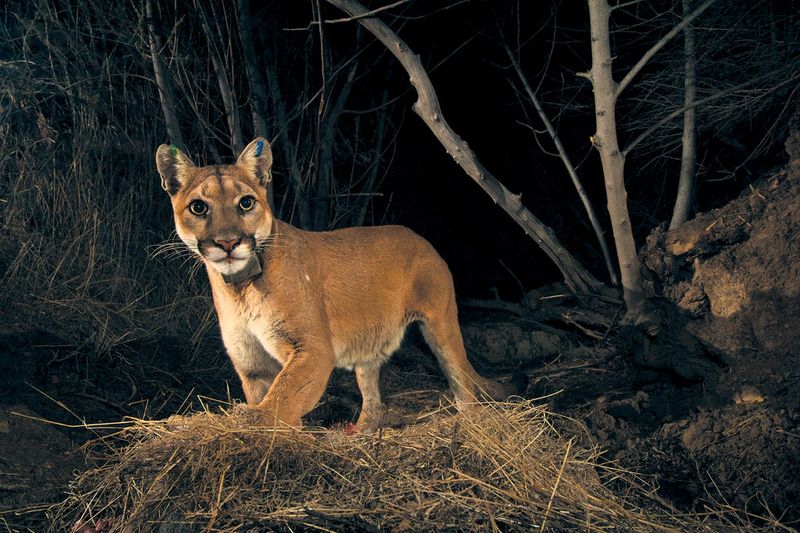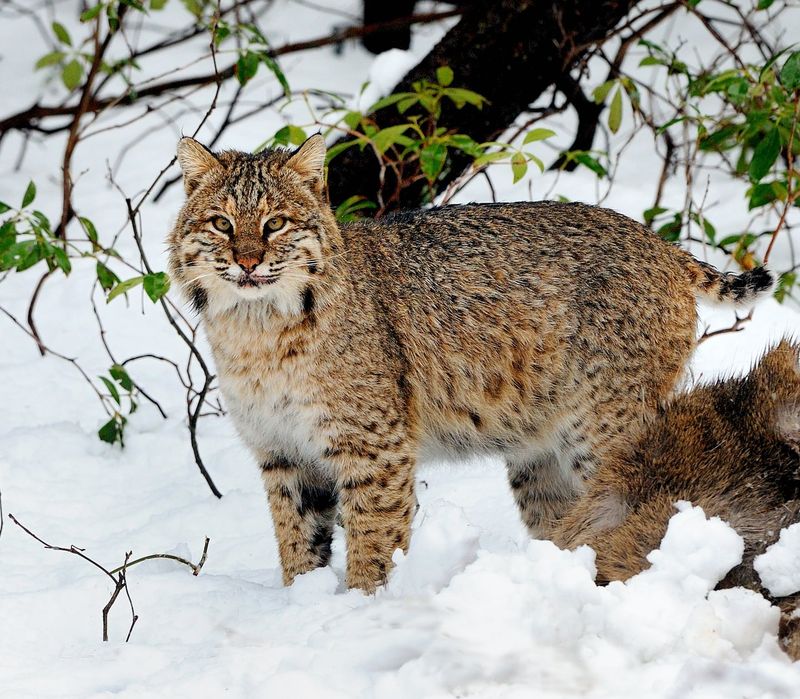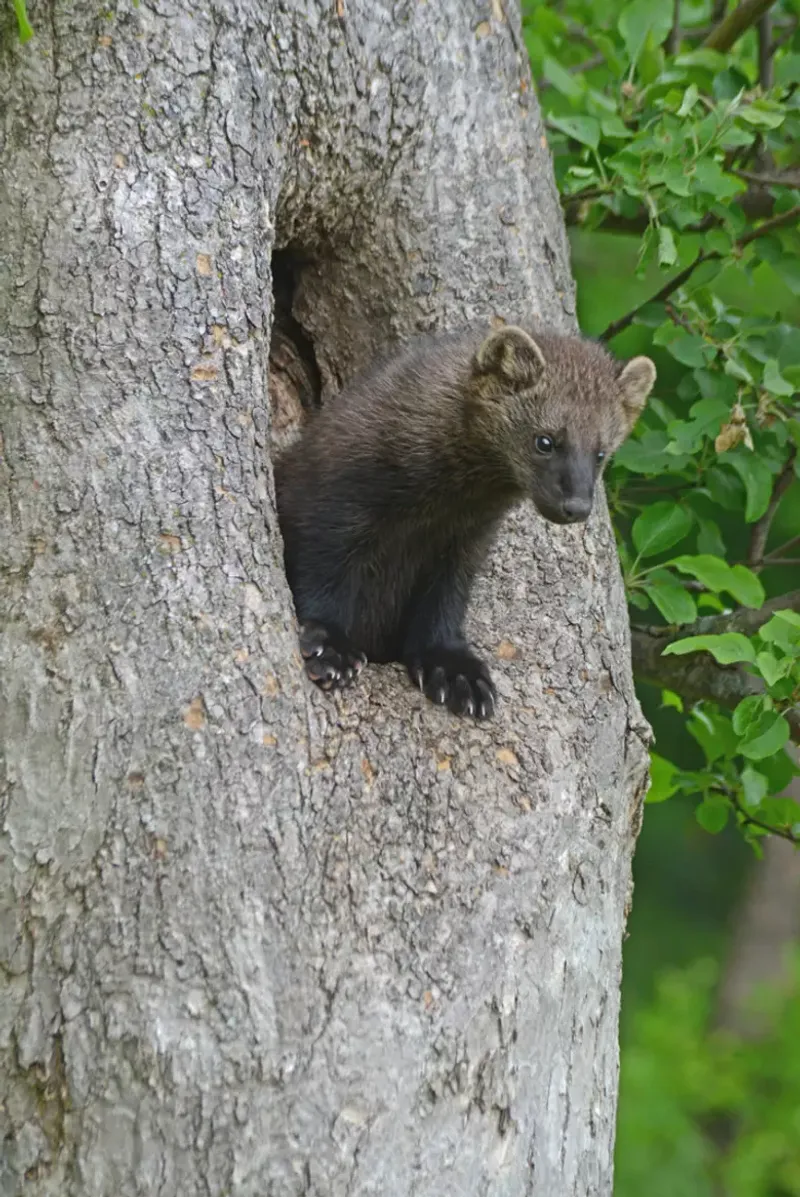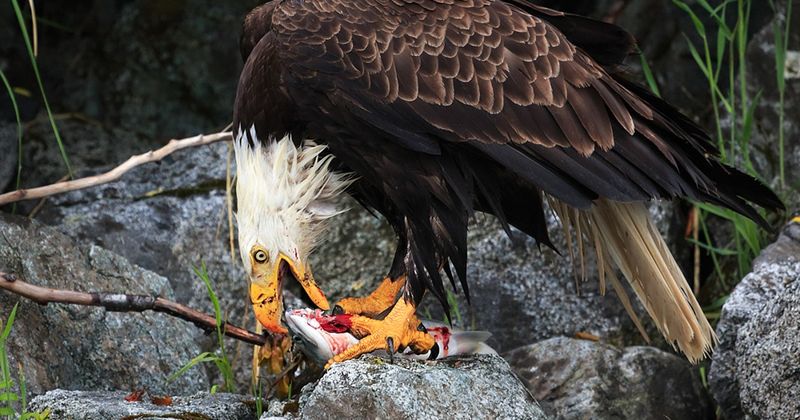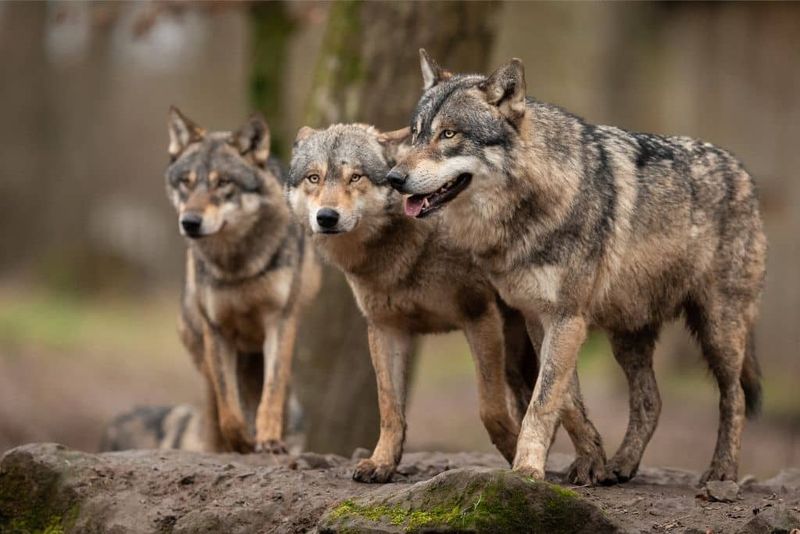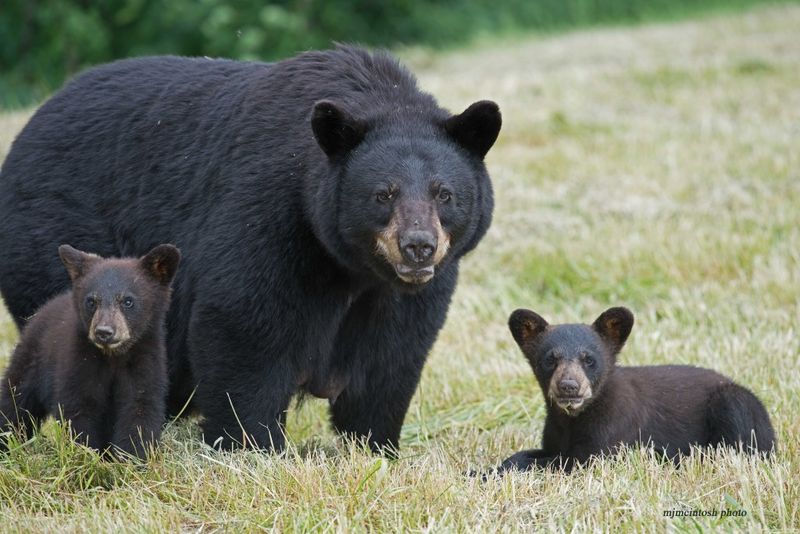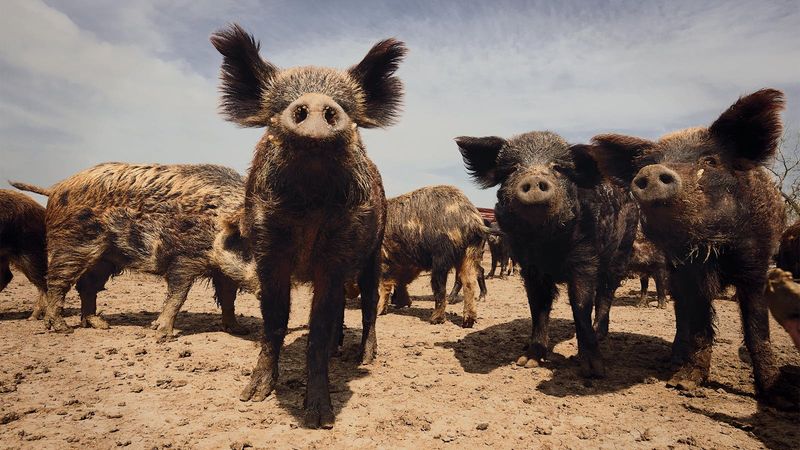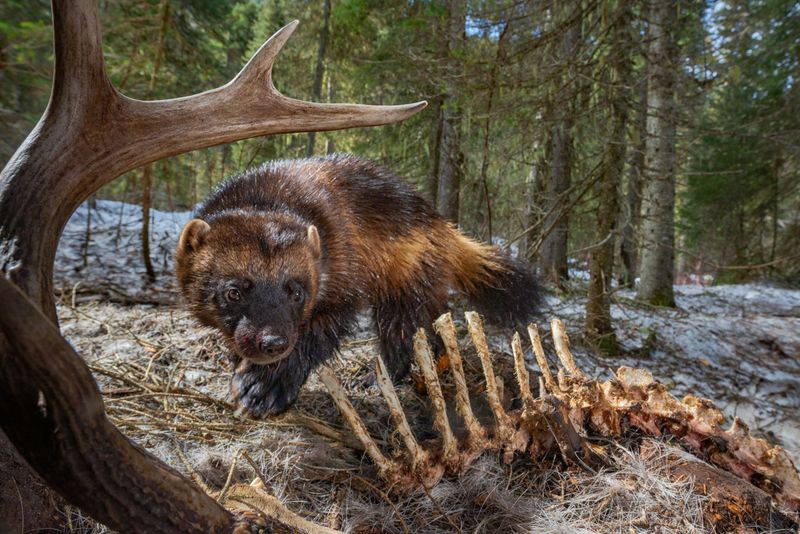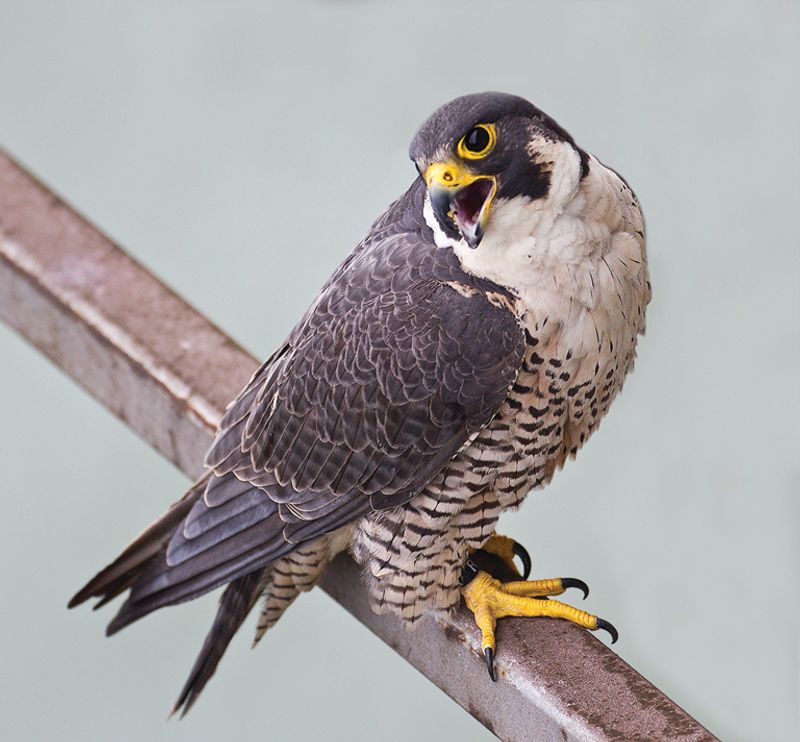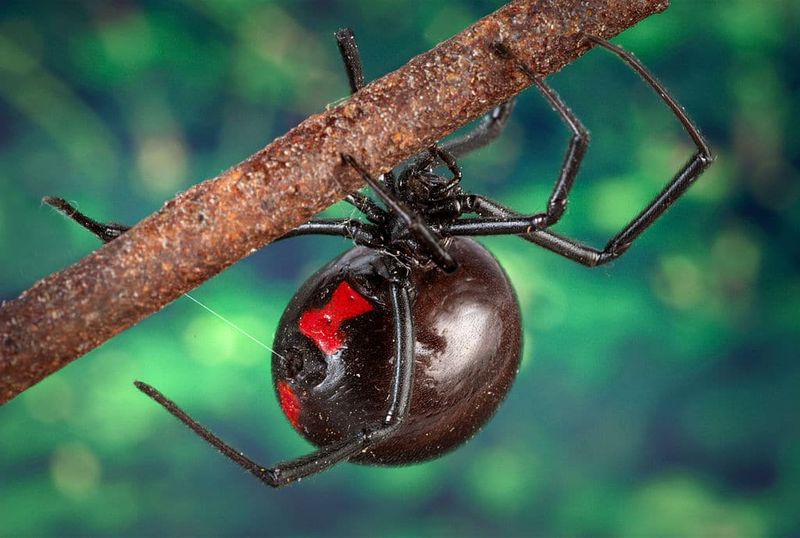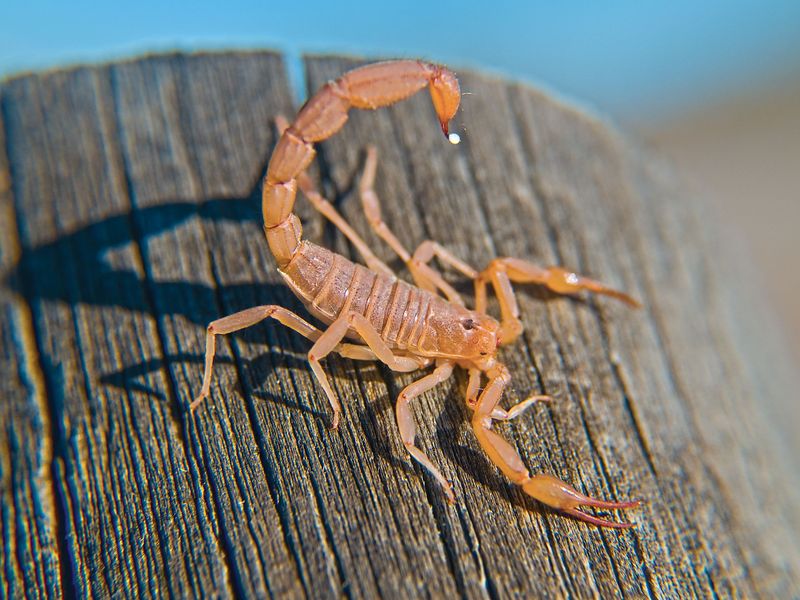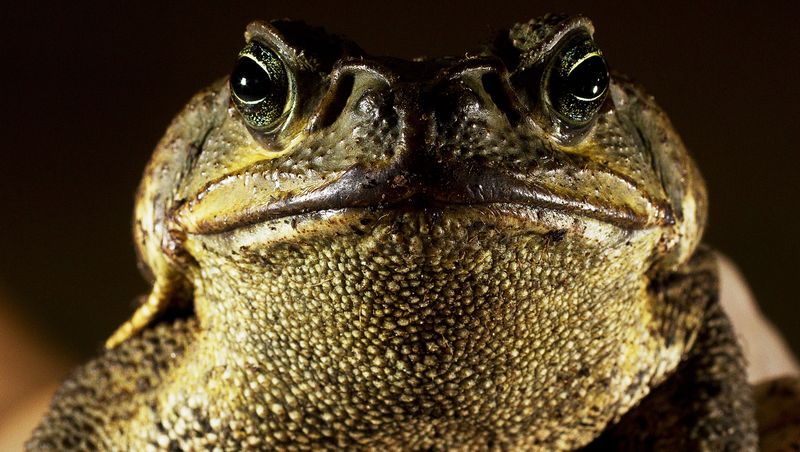📖 Table of Content:
Cat owners need to be aware of the dangers lurking in their neighborhoods and beyond. While cats are skilled hunters, they can also become prey to larger or more aggressive animals. Understanding which creatures pose a threat to your feline friend can help you take precautions to keep them safe, whether they roam outdoors or stay primarily inside.
1. Coyotes
Coyotes are one of the biggest threats to outdoor cats across North America. These wild canines are adaptable predators that have expanded their territory into suburban and even urban areas. A hungry coyote won’t hesitate to attack and kill a cat, especially at night when both animals are most active.
The risk increases during winter months when their natural food sources become scarce. Protect your cat by keeping them indoors from dusk till dawn. If you live in a coyote-prone area, consider building a coyote-proof outdoor enclosure with a secure top and buried fence to prevent digging.
2. Hawks
Aerial predators like hawks pose a serious danger to cats, particularly smaller ones weighing under 12 pounds. Red-tailed and Cooper’s hawks are known to swoop down and carry off small pets. These birds of prey have exceptional vision, allowing them to spot potential meals from high above.
Your cat’s movement in an open yard can trigger a hawk’s hunting instinct. Never leave small cats unattended in open spaces. Create protective cover in your yard with dense shrubs or trees where cats can quickly hide. Consider supervised outdoor time or a covered enclosure to shield your pet from airborne threats.
3. Owls
Nighttime brings out silent hunters that threaten cats. Great horned owls are particularly dangerous, capable of taking prey larger than themselves with powerful talons that exert hundreds of pounds of pressure.
These nocturnal birds fly silently, making them nearly impossible for cats to detect until it’s too late. Kittens and small adult cats are most vulnerable, especially in rural or wooded areas. Motion-activated lights can discourage owls from entering your yard at night. Bringing cats inside after dark eliminates this risk entirely. If your cat must be outside, provide structures like covered patios where they can enjoy fresh air while remaining protected.
4. Foxes
Foxes have adapted remarkably well to human environments, making them common visitors in suburban and urban areas. While adult cats can usually defend themselves against foxes, kittens and elderly cats make easier targets.
Red foxes are opportunistic hunters active at dawn and dusk. They’re drawn to properties with accessible food sources like unsecured garbage or pet food left outdoors. Remove attractants that might draw foxes to your property. Don’t leave pet food outside overnight, and secure garbage bins with bungee cords or locks. Motion-activated sprinklers can also deter foxes from entering your yard while keeping your garden watered.
5. Raccoons
Don’t let their cute appearance fool you—raccoons can seriously injure or kill cats during territorial disputes. These masked bandits are surprisingly strong with sharp claws and teeth, making them formidable opponents.
Raccoons are primarily active at night and are drawn to food sources like garbage cans, compost piles, and pet food. They’re known to be aggressive when cornered or when protecting their young. Never leave cat food outside overnight, as it attracts raccoons to your property. Keep garbage secured and remove fallen fruit from trees. Ensure your cat has a quick escape route into the house, like a cat door that only they can access.
6. Snakes
Venomous snakes present a deadly threat to curious cats. A single bite from a rattlesnake, copperhead, or water moccasin can be fatal without immediate veterinary intervention. Cats often approach snakes out of curiosity or hunting instinct, putting their noses or paws within striking distance.
Snake venom acts quickly, causing severe tissue damage, internal bleeding, or respiratory failure. Keep your yard tidy by removing debris piles where snakes might hide. Consider snake-proof fencing if you live in an area with venomous species. Learn to identify local venomous snakes and know the location of the nearest emergency vet that stocks antivenom.
7. Alligators
For cat owners in southeastern states like Florida, Louisiana, and parts of Texas, alligators represent a serious threat. These prehistoric predators inhabit freshwater areas, including ponds, lakes, canals, and even swimming pools. Alligators are ambush hunters that wait at the water’s edge for unsuspecting animals to approach.
They’re capable of explosive bursts of speed on land, much faster than most people realize. Never allow your cat near water bodies in alligator country. Keep them well away from shorelines, even if the water appears clear. Consider an enclosed catio for outdoor time in high-risk areas, and be especially vigilant during alligator mating season in spring.
8. Large Dogs
Certain dog breeds with high prey drives pose significant dangers to cats. This includes hunting breeds like greyhounds and sight hounds, as well as terriers bred to chase and kill small animals. Even well-trained dogs can instinctively chase cats, triggering a predatory sequence that might end tragically.
The size difference between a large dog and a cat means even playful interactions can result in serious injuries. Always supervise interactions between unfamiliar dogs and your cat. Never allow your cat to roam in neighborhoods with known aggressive dogs. When introducing a new dog to a resident cat, do so gradually with proper barriers and control measures in place.
9. Cougars
Rural and suburban areas bordering wilderness face the threat of cougars (also called mountain lions or pumas). These powerful big cats can weigh up to 200 pounds and are capable of taking down much larger prey than housecats. Cougars are solitary and stealthy hunters that typically avoid humans but won’t hesitate to prey on pets.
They’re most active at dawn, dusk, and night, using cover and surprise to their advantage. Motion-sensor lighting around your property can deter nighttime visits. Bring pets inside before dark in cougar territory. If possible, clear dense vegetation near your home that could provide hiding spots for these predators.
10. Bobcats
More common than their larger cougar cousins, bobcats present a real danger to domestic cats throughout North America. These medium-sized wild felines typically weigh 15-35 pounds—much larger than the average housecat. Bobcats are territorial and may view domestic cats as both competition and prey.
They’re excellent climbers and jumpers, easily scaling fences that would stop other predators. Trim tree branches that overhang your yard to prevent bobcats from using them as entry points. Install roller bars or coyote rollers on top of fences to prevent climbing. Consider motion-activated sprinklers as a humane deterrent that won’t harm wildlife but will discourage unwanted visitors.
11. Fisher Cats
Fisher cats (actually members of the weasel family) have earned a fearsome reputation in the northeastern United States. These predators possess incredible climbing abilities and can pursue cats up trees where they might normally feel safe.
Despite their name, fishers rarely eat fish. They’re carnivores with a diet consisting of small mammals, including domestic cats when the opportunity arises. Their slender bodies allow them to access spaces larger predators cannot. Keep cats indoors, especially at night when fishers are most active. Remove bird feeders that attract squirrels, which in turn attract fishers. Secure trash cans and compost bins that might serve as food sources, drawing these predators to your property.
12. Eagles
Both bald and golden eagles possess the strength to carry off small cats weighing up to 5-6 pounds. These massive birds have powerful talons capable of exerting hundreds of pounds of pressure per square inch. Eagles typically hunt during daylight hours, soaring high above while scanning for movement below.
Kittens and smaller cat breeds face the highest risk, especially in open areas without protective cover. Create safe outdoor spaces with overhead protection like pergolas or mesh covers. Avoid leaving small cats unattended in open yards, particularly in areas near eagle nesting sites. Eagle attacks are relatively rare but devastating when they occur.
13. Wolves
While wolf encounters are rare in most areas, they present a lethal threat to cats in rural regions bordering wilderness. Wolf packs are highly efficient predators that can easily overpower domestic animals. Wolves typically avoid human settlements but may venture closer during harsh winters when prey becomes scarce.
Their excellent sense of smell allows them to detect pets from considerable distances. Never leave cats outside overnight in wolf country. Consider installing perimeter fencing at least 6 feet tall with buried wire to prevent digging. Wolf deterrents like motion-activated lights and sound devices can provide additional protection for rural properties where wolves might approach.
14. Bears
Bears don’t typically hunt cats, but opportunistic black and brown bears won’t hesitate to attack pets that cross their path. These massive omnivores are drawn to residential areas by food attractants like garbage, bird feeders, and pet food. Spring and fall are particularly dangerous seasons as bears increase feeding activity before and after hibernation.
A startled bear can react defensively if it encounters a cat, with potentially fatal consequences. Store all pet food indoors and feed cats inside. Clean barbecue grills thoroughly after use to remove food odors. Bear-proof garbage containers are essential in bear country, along with avoiding outdoor feeding of any animals.
15. Feral Hogs
Increasingly common across the southern United States, feral hogs pose an emerging threat to outdoor cats. These intelligent, aggressive animals travel in groups called sounders and can weigh several hundred pounds. Feral hogs are omnivorous with voracious appetites, consuming virtually anything they encounter.
They have poor eyesight but an excellent sense of smell, often rooting through yards and gardens in search of food. Sturdy fencing with reinforced bottom sections can help keep hogs off your property. Remove fallen fruit, nuts, and other food sources that might attract them. Report feral hog sightings to local wildlife authorities, as these invasive animals cause extensive environmental damage.
16. Wolverines
Though rare and limited to remote northern regions, wolverines are pound-for-pound among the most formidable predators in North America. These muscular members of the weasel family have incredible strength and tenacity.
Wolverines maintain large territories and typically avoid human settlements. However, in areas where human development encroaches on wilderness, encounters become more likely. They’re known for their ferocity when confronted. Keep cats indoors in areas where wolverine sightings have been reported. Secure outbuildings where cats might hide, as wolverines can break into structures seeking food or shelter. Motion-activated lights and noise deterrents can help keep these powerful predators at a distance.
17. Large Raptors
Beyond eagles and hawks, other large raptors like ospreys and some falcon species can threaten smaller cats. These specialized aerial hunters have exceptional vision and can dive at speeds exceeding 100 mph. Raptors typically hunt during daylight hours and prefer open areas where they can spot movement from above.
Small cats and kittens in particular may be mistaken for natural prey like rabbits or squirrels. Create protected outdoor spaces with overhead coverage like pergolas or shade cloth. Avoid leaving small cats in open yards unattended during peak hunting hours. Bright-colored cat collars with bells may help make your pet less appealing as prey and provide warning to potential attackers.
18. Venomous Spiders
While not predators in the traditional sense, venomous spiders like black widows and brown recluses pose a serious health threat to curious cats. Their venom can cause severe tissue damage, organ failure, or death. Cats often investigate spider webs or hiding spots, increasing their risk of bites. The areas around their nose and paws are particularly vulnerable.
Young kittens and elderly cats face the highest risk due to their smaller size and weaker immune systems. Regularly clean areas where spiders commonly nest, including garages, basements, and storage areas. Use sticky traps in corners and under furniture to monitor spider activity. Know the symptoms of spider bites in cats, including swelling, pain, and lethargy.
19. Scorpions
In southwestern states, scorpions represent a painful and potentially deadly threat to cats. Species like the Arizona bark scorpion pack venom potent enough to kill small animals. Cats often bat at or pounce on moving scorpions, resulting in stings to sensitive areas like paws and face.
Symptoms of scorpion stings include intense pain, swelling, drooling, difficulty breathing, and in severe cases, paralysis. Seal cracks and openings in your home’s foundation and walls where scorpions might enter. Keep beds and furniture away from walls, and shake out shoes, blankets, and clothing before use. Consider professional pest control services if you live in a high-risk area with frequent scorpion sightings.
20. Toxic Toads
Certain toad species, like the cane toad in Florida and the Colorado River toad in the Southwest, secrete powerful toxins that can kill cats within minutes. These defensive chemicals are released when the toad feels threatened.
Cats may paw at, bite, or mouth these amphibians out of curiosity, ingesting the toxins in the process. Symptoms appear rapidly and include drooling, gum discoloration, seizures, and cardiac arrest. Learn to identify toxic toad species in your region. Keep cats indoors during evening hours when toads are most active, especially after rain. Create barriers around water features where toads might gather, and immediately flush your cat’s mouth with water (not down the throat) if you suspect contact.
